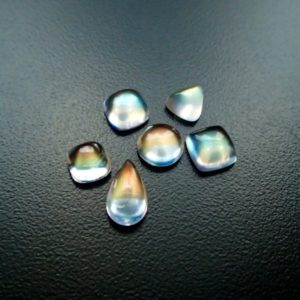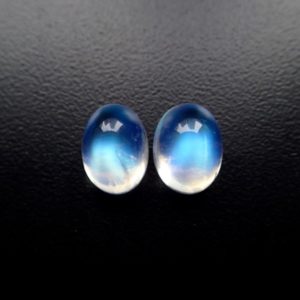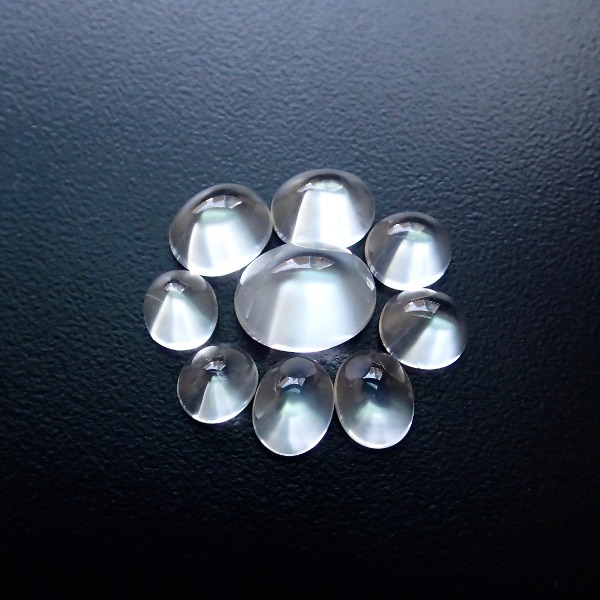Moonstone, Labradorite, Sunstone
Boston Gems specialty is the Feldspar groups. We have one of the largest inventoried varieties in the world which includes fine Sri Lankan, Indian, Burmese and African Moonstones. What makes our selection so special is that we have produced new and old shapes of Feldspar using our own rough to cut pieces that excite our talented designer community.

Treatment / Enhancement
Moonstone, labradorite, and spectrolite have no known enhancements or treatments. Because moonstone is often very transparent, it is sometimes backed with a darker material during setting to show the phenomenal characteristics to their best advantage.
Origin
Moonstone is the most well-known member of the feldspar group, which includes labradorite, spectrolite, and sunstone. The largest moonstone deposits have been from India and Sri Lanka, but recently a deposit was found in Tanzania.
The primary characteristic of most fine feldspar is a beguiling play of light that shimmers playfully when the stone is moved, known as “adularescence.” The body color of moonstone can be clear, white, black, peach, yellow, beige, and grey. Sri Lankan moonstone is prized for its clear or white body color, but rich blue adularescence.
Labradorite, of course, is named for Labradore, Canada where it was discovered. However, most of the material today comes from Madagascar. Labradorite has a translucent greyish body color with an adularescence of greens, blues, violets, and golden hues.
Spectrolite is found primarily in Finland. It’s body color is opaque with blue to green to violet flashes of adularescence.
The finest sunstone is found in Oregon, but fine specimens have recently been discovered in Tanzania. Both these localities produce clear body or semi-translucent body color with bright orange flashes. The Oregon material attributes its orange color to copper inclusions, whereas the Tanzanian material has microscopic hematite inclusions. India also produces sunstone, but it is opaque with hematite or goethite inclusions to give it the orange glitter. There is sunstone know as andesine which is diffused with copper, but it does not have the glitter of the sunstones described above.
Folklore
Ancient Romans believed moonstone was the magical crystallization of actual moonlight. The ancient Greeks called the moonstone Aphroselene, a combination of the names for the love goddess, Aphrodite, and the mood goddess, Selene. Thought to have magical powers it was used to treat all manner of physical illnesses and emotional problems. Moonstone was also a favorite of the French master goldsmith and designer, Rene Lalique and his contemporaries during the Art Nouveau period. Today in Arab cultures women often wear moonstones secretly sewn in their clothing as a symbol of fertility.


Care
With a hardness of 6 on the Mohs scale, moonstone is somewhat soft, but not brittle. All feldspar jewelry may be steam cleaned but should not be put in an ultrasonic.
